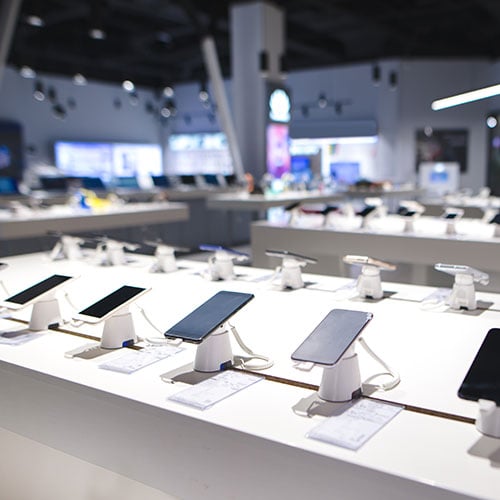Replenishment Planning
The key to a profitable customer experience-focused retailer is the highest possible stock availability with the lowest possible inventory holdings. Quantiful delivers unsupervised replenishment to ensure this result and free product planners to do their best.
Stocking the Market
Business context
Figuring out where to send the stock you’ve got on hand so that it sells through fast and customers aren’t disappointed is incredibly challenging for retailers of all shapes and sizes.
The replenishment challenge gets exponentially more complicated as customers' buying behaviour changes and retail footprints fragment. Larger retailers frequently plan millions of stock locations every week, which is both a complex operational challenge and an arduous task.

Bottom-up SKU location planning
Plan from the bottom up at whatever level makes sense for you and move to deliver a true Integrated Planning outcome.
Build accurate 5-13 week demand forecasts
Deliver significant improvements in planning accuracy by using more of your sales data.
Automatic replenishment
Highly accurate forecasts allow you to automate up to 90% of your short-term replenishment.
Empower planning teams
Give demand planners the insights, visibility and control they need to deliver great business outcomes.
How do retailers plan today?
The standard approach to replenishment planning is for demand planners to build complex Excel models and feed historical sales data to get future sales plans out. However, this is crude at best and delivers sub-optimal plans. Demand planning software modules from ERP vendors are not set up to deal with contemporary buying behaviour, which results in stock-outs, aged stock, and high working capital performance.
Traditional planning tools don’t account for the complexity and variability that drives modern retail. They used generalised models to produce generalised outcomes that typically assume most stores in a given area will behave similarly – which just isn’t true. Every store is unique, and to plan properly, you must plan at a unique PRODUCT location level and ensure you are dynamic enough to deal with changes and, therefore, mitigate out of stocks or obsolescence.
How does Quantiful help?
Quantiful is the leading demand planning software solution for retailers. It is capable of delivering millions of PRODUCT location plans every single day. It replaces most/all existing planning spreadsheets and is the foundation of an actual integrated planning process.
Leveraging the power of AI, Quanitful delivers accurate demand profiles at POS, so you can dynamically set min and max levels for each product for each store. Forecasts are built bottom-up – by product location and driven by a range of inputs, including historical sales data, POS information and, potentially, third-party data sources that bring external data sets into the model.
Forecasts are accessible to planners through the Quantiful GUI and, once accepted, are fed back into your ERP for replenishment. Let the Quantiful software deliver stock replenishment unsupervised to your stores where there is a high degree of confidence. And when there isn’t, don’t worry , Quantiful will alert you based on pre-set variance tolerances so you can intervene manually and remediate at any level in your data hierarchy.
With a significant proportion of PRODUCT locations being planned and fulfilled automatically, planners can focus on higher-value activities and bring a more profound understanding of the operation of the business.

Farmers Success Story
Farmers is a leading Kiwi retailer with more than 60 stores. Learn how Farmers use Quantiful to replenish 1.4m SKU locations automatically every single week.
How does Quantiful work?
Flat data files containing millions of lines of data are uploaded into Quantiful’s data lake daily. Quantiful then consolidates sales data and its associated attributes and then runs AI algorithms over the top to produce bottom-up demand forecasts. These forecasts are pushed back to your inventory management system to drive automated fulfilment processes.
Any forecast anomalies are flagged so staff can intervene before they become out-of-stock or obsolescence issues.
What results can you expect?
Quantiful customers are achieving remarkable results. They are seeing improving stock availability and increasing stock turnover, which leads to more sales and lower working capital requirements. Quantiful would expect our retailers to reach 90% replenishment running unsupervised, an 8% improvement in stock availability in store, and a 1.25 multiple to stock turn.
Read our 2024 Retail Analysis Report for Australian Retailers.
Subscribe to news and product updates

